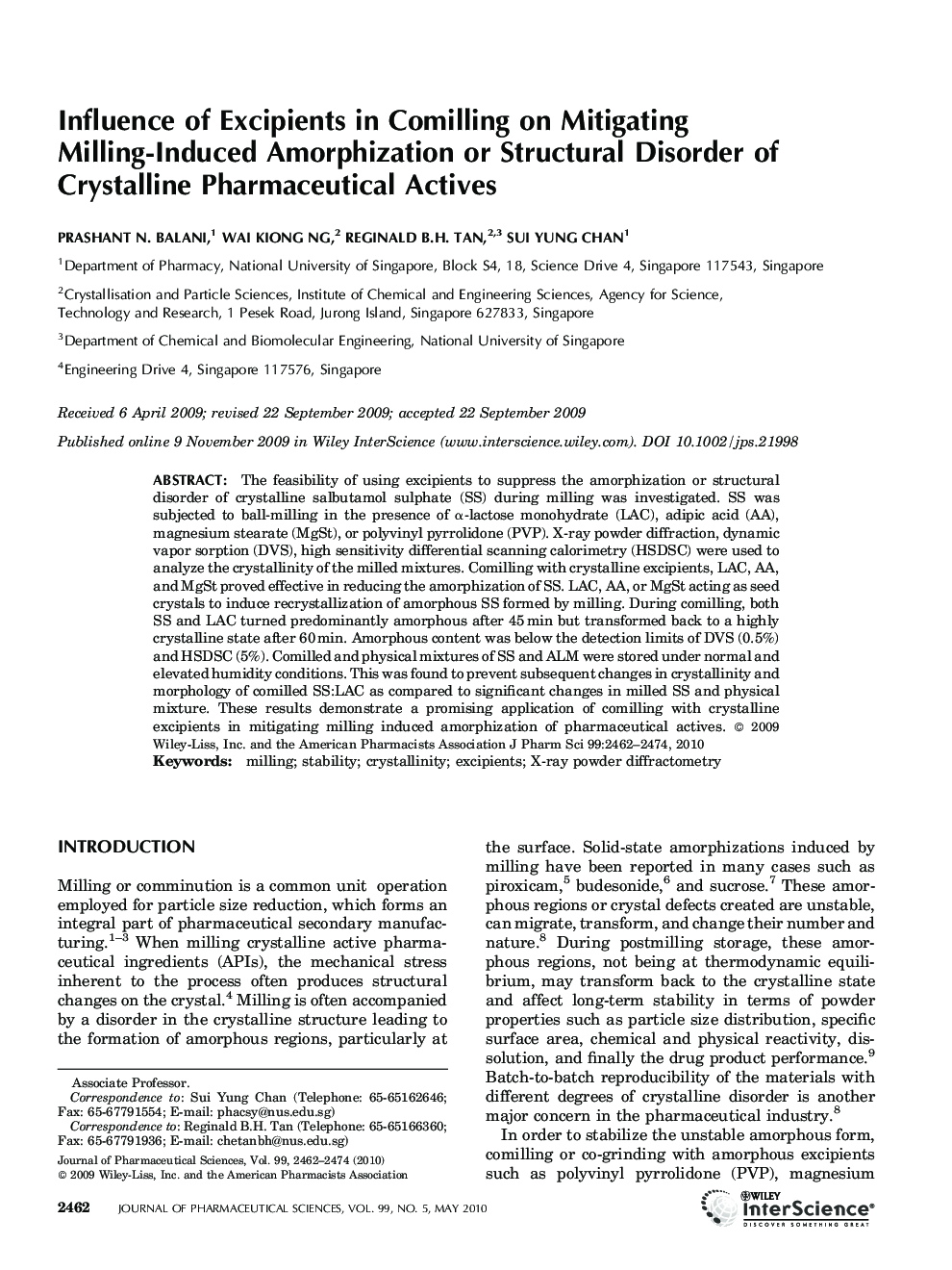| Article ID | Journal | Published Year | Pages | File Type |
|---|---|---|---|---|
| 2485915 | Journal of Pharmaceutical Sciences | 2010 | 13 Pages |
Abstract
The feasibility of using excipients to suppress the amorphization or structural disorder of crystalline salbutamol sulphate (SS) during milling was investigated. SS was subjected to ball-milling in the presence of α-lactose monohydrate (LAC), adipic acid (AA), magnesium stearate (MgSt), or polyvinyl pyrrolidone (PVP). X-ray powder diffraction, dynamic vapor sorption (DVS), high sensitivity differential scanning calorimetry (HSDSC) were used to analyze the crystallinity of the milled mixtures. Comilling with crystalline excipients, LAC, AA, and MgSt proved effective in reducing the amorphization of SS. LAC, AA, or MgSt acting as seed crystals to induce recrystallization of amorphous SS formed by milling. During comilling, both SS and LAC turned predominantly amorphous after 45 min but transformed back to a highly crystalline state after 60 min. Amorphous content was below the detection limits of DVS (0.5%) and HSDSC (5%). Comilled and physical mixtures of SS and ALM were stored under normal and elevated humidity conditions. This was found to prevent subsequent changes in crystallinity and morphology of comilled SS:LAC as compared to significant changes in milled SS and physical mixture. These results demonstrate a promising application of comilling with crystalline excipients in mitigating milling induced amorphization of pharmaceutical actives. © 2009 Wiley-Liss, Inc. and the American Pharmacists Association J Pharm Sci 99: 2462-2474, 2010
Related Topics
Health Sciences
Pharmacology, Toxicology and Pharmaceutical Science
Drug Discovery
Authors
Prashant N. Balani, Wai Kiong Ng, Reginald B.H. Tan, Sui Yung Chan,
